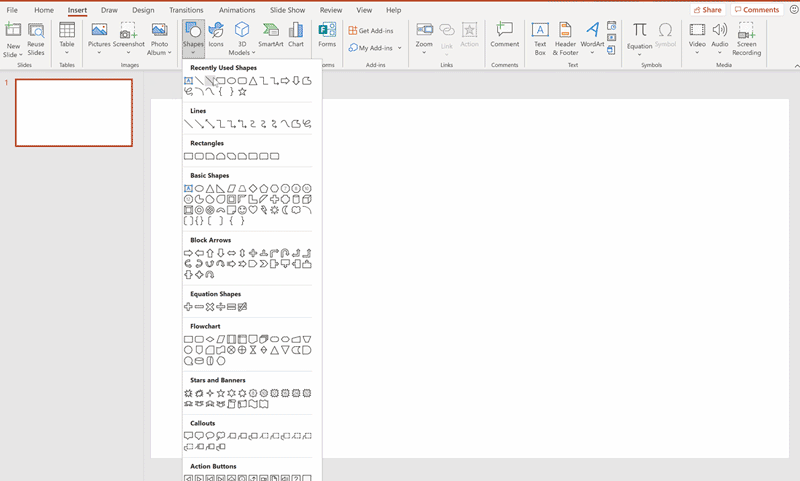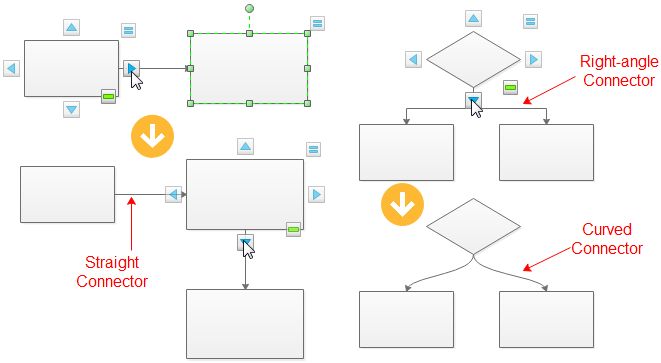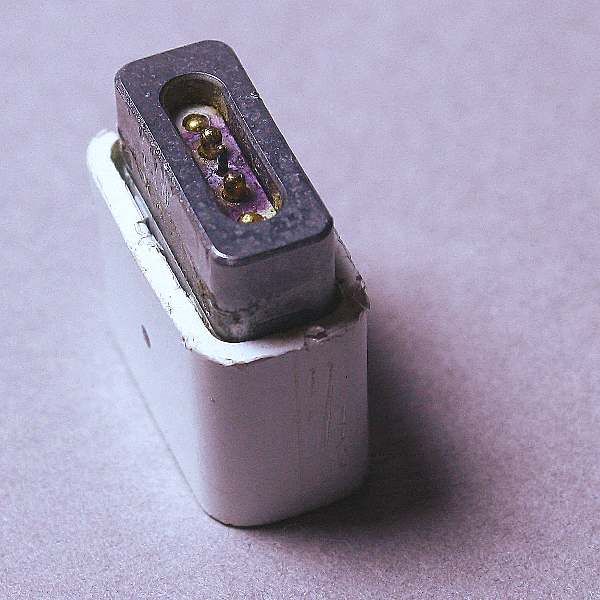

- Add connectors to shapes in powerpoint for mac manual#
- Add connectors to shapes in powerpoint for mac trial#
And then, underneath the connection, you will have one or more queries pointing to tables, views, or custom SQL statements. Think of it as a connection to a database with your username and password. Note that most of the data providers will have a connection and then one or more queries. Then, you have a second group with buttons related to queries. The first three buttons are related to connections: add connection, edit connection, and remove connection. Basically, you have three groups of buttons on the right. After selecting the Microsoft Excel data provider, you can see that you can add a connection. If you want to link and show information from a Microsoft Excel file, then you select the Microsoft Excel node from the Microsoft group here.Īfter the selection of a data provider, you will see that some buttons are enabled.

Each type of database, or each type of technology, has a specific data provider in DataPoint. On the left side, you will see a large list of data providers that you can choose from. This opens a form where you can manage all of the data connections of this presentation. Start your Microsoft PowerPoint application and start with a new presentation.Īt the connections group, click the List button to open the data connections.
Add connectors to shapes in powerpoint for mac trial#
Here, you can check out the version of DataPoint, the status of the trial or license, check for updates, and so on. Once you have at least one data connection, then you can do certain things for instance, insert a table, select that table, and go into DataPoint’s table linking properties.Įvery application has a group where you will find all other buttons and functionalities that did not fit in the previous groups.

When you have no data connections set up, you can’t make a text box dynamic. Note that most controls of the shapes group are enabled based on what type of shape you have selected. First, you set up data connections for your presentation, then you link your PowerPoint shape on your slide to a given data connection. This is the most important and most used group of the DataPoint ribbon. You can enable data scrolling for this slide, or just hide a slide when there is no data. In this group, you will find buttons directly linked or related to the current slide.
Add connectors to shapes in powerpoint for mac manual#
Or you can initiate a manual refresh of the connections. Here, you set up the data connections that you want to use in your presentation. Typically, you start here when you want to create a dynamic or data-driven presentation. This is one of the two most important groups on the DataPoint menu. Or you can inspect your presentation, or generate new snapshot presentations. You can change some specific properties of the presentation, such as if you want to enable or disable data caching. This group represents a few buttons directly related to this presentation. Look closely at the DataPoint ribbon and you will see a few groups of buttons. (And I have Visio too, but choose not to use it.After installation, a new menu option with the name DataPoint is available in your PowerPoint ribbon.Ĭlick DataPoint to open the DataPoint ribbon or menu for more options. Using page breaks, I can print out a large chart in predetermined sections and it's a lot easier to create continuous than spanning slidesĪnd being restricted to their size. Anyway, I know from experience this technique works great.įWIW, however, I prefer to make my larger flowcharts in Excel using this same technique because the 'canvas' is bigger. It sometimes communicates better that way than to have them all merge into one point.

Sometimes one shape will incorporate several dummy shapes for connection points as many branches feed into the one shape. To be sure I don't separate the two, I group it with the primary shape. The shape where I need it, and that's where I connect the line. I line it up with the real shape and them move it along I usually use a triangle or diamond – something with a point. I make lots of flowcharts on a regular basis, and I've gotten used to adding a "dummy" shape, as Steve called it.


 0 kommentar(er)
0 kommentar(er)
